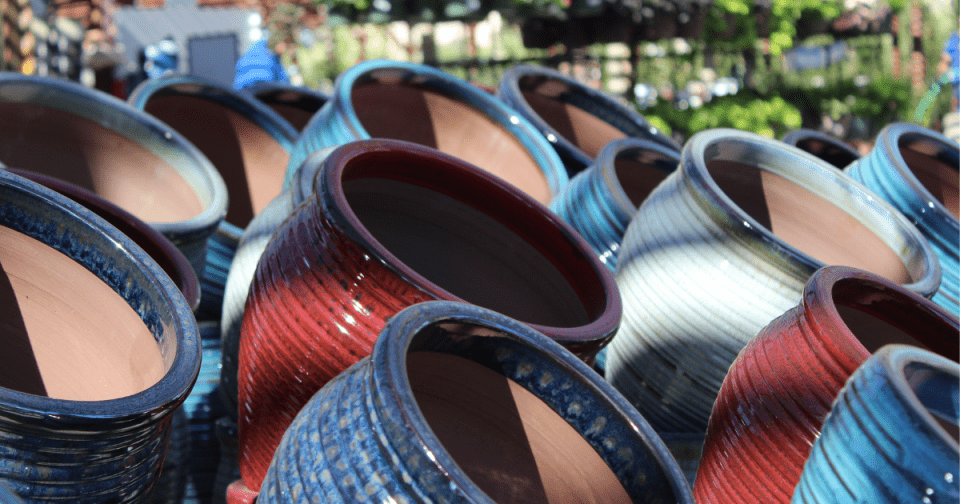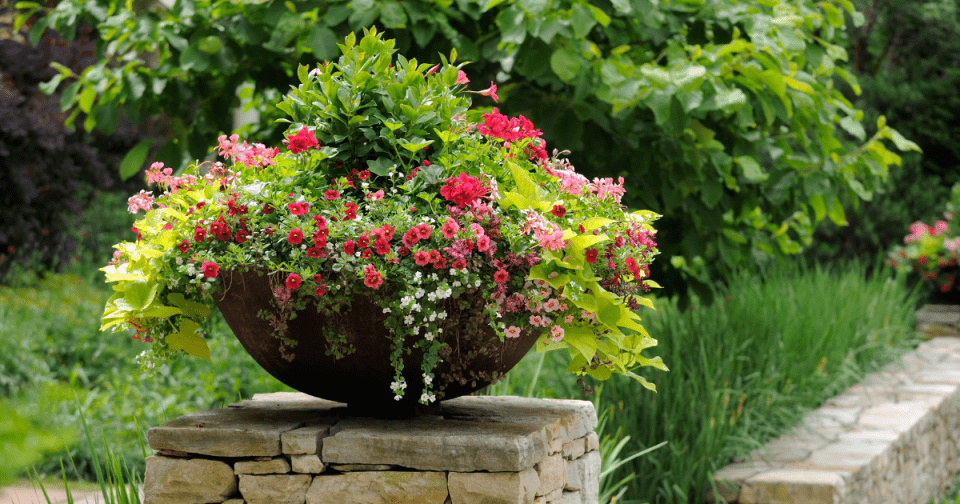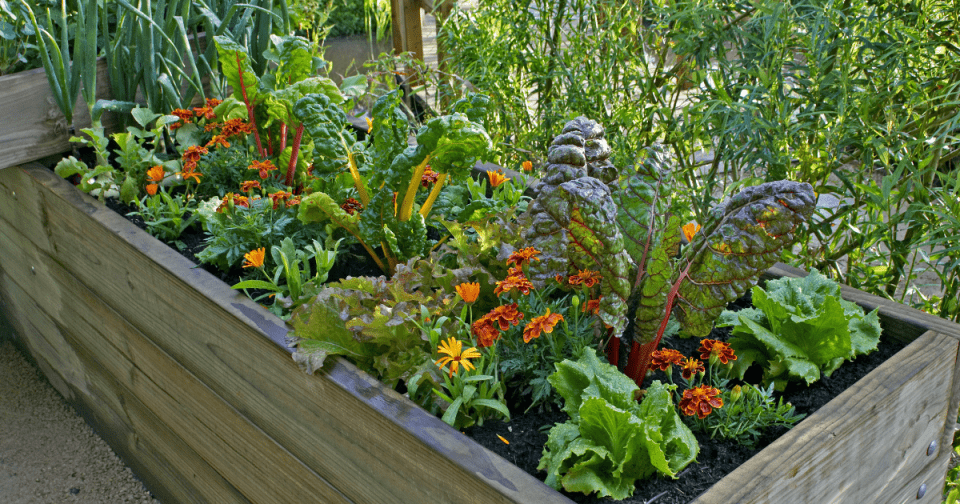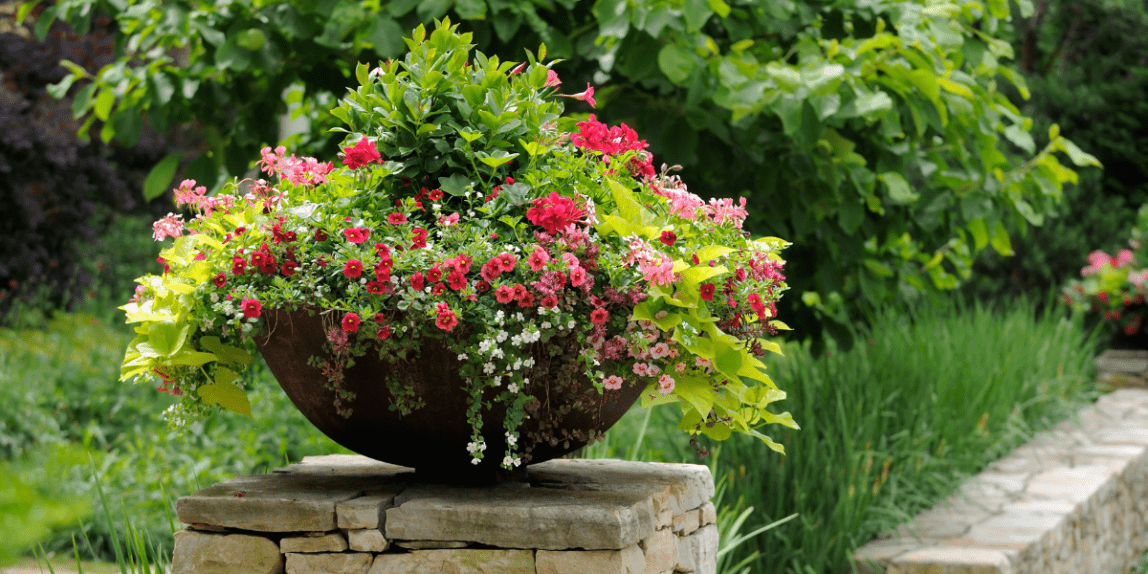Plants and flowers come in all shapes and sizes! If space permits, gardeners may choose to plant trees or shrubs that will grow to be very large; however, a large amount of space is not required to be a successful gardener. Whether you have a small yard, live in an apartment, or are short on available planting areas, we’ll teach you how to maximize your growing space by utilizing containers!

Large containers are useful in outdoor settings because they allow gardeners to grow plants that may need to be relocated to different areas of the yard depending on seasonal environment factors. Small containers are useful indoors and outdoors to allow gardeners the freedom to grow plants in any area! Common types of gardening containers include pottery or raised beds, but gardeners may make containers out of any material.
When a plant grows in the ground, the root system can grow as deep and wide as necessary and soil nutrients are replenished from external environmental factors. Oppositely, when growing in containers, gardeners must be aware that there is limited growing room and limited access to nutrients, but these challenges are easily overcome with good planning and a watchful eye.

To combat limited growing room, use a container that will provide enough room for root growth, as insufficient room may cause the plant to develop a girdling root (meaning the root will grow in a spiral along the base of the container, gradually strangling the trunk). When choosing pottery items, consider how quickly a plant’s root system will grow and how often you are willing to transplant it into a larger pot.
As you prepare to add your plant to its container, be sure to choose a soil that will provide good drainage. Soil in containers will retain water longer because the soil is in a compact, enclosed space. To counter this, use a potting mix that contains “lighter” materials such as moss, coir, pumice, perlite, or vermiculite, as they will not hold onto water for as long. Additionally, always be sure to use a pot that has a drainage hole. A common misconception is that adding rocks to the bottom of the pot will improve drainage, but doing so will merely limit available growing space and cause a build up of mud at the bottom.

Once you’ve potted your plant, don’t forget about it! Containerized plants still require occasional maintenance. To grow well, all plants must absorb nutrients from the soil by ‘pulling up’ water from the roots. When a plant grows in a pot, it will absorb all soluble nutrients until the soil is depleted. To ensure your plant has a continued source of nutrients, be sure to add fertilizer back into the soil, as needed. Fertilizer type and frequency of use is dependent on the type of plant you are growing in the pot. Be sure to research the needs of each individual plant and always read the instructions on the label for any fertilizer you use.
When growing any plant, remember that success is determined by placing the right plant in the right growing conditions. Be sure to research what conditions are best for your desired plant and offer those conditions to the plant! When growing in containers, be mindful of room for root growth, drainage, and access to nutrients, and you will be a Star container gardener!
